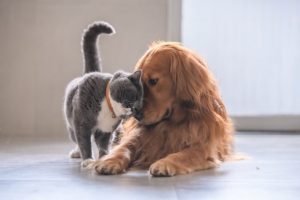
We had a great time at Well Ray in Del Ray in June. Seeing all the wellness vendors and activities got us thinking about ways we could help keep our four-legged friends healthy. It can be difficult to know if something is wrong if you don’t know what’s normal. The easiest way to make sure pets stay healthy is to perform a monthly Nose to Tail Check. That way you know what’s normal for your pet and can recognize when something has changed and know when a trip to the vet is needed. Unfortunately, most pet owners have not incorporated this into their regular routine. Some may not even know what it is or how to do it. That’s where we come in!
Doing a monthly Nose to Tail Check is easy. It not only allows you to be in touch with what your pet’s normal body looks and feels like, it also gets your pet used to being touched which can make things easier when grooming or additional care is needed. Here’s how it’s done:
You want to perform your exam while your pet is relaxed in a quiet location, to prevent any distractions. As the name states, you will start your wellness check from the tip of your pet’s nose and make your way to the tip of their tail, checking everything in between.
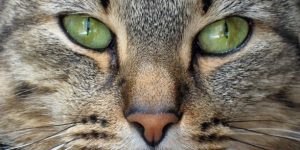
Nose
Your pet’s nose should be either black or pink, depending on your pet. You want to observe their nose for any dryness or cracking, looking for any sores. If everything looks normal, you want to touch their nose. Both dogs and cats have a wet nose and should either be cool or slightly warm. You want to seek medical advice if their nose is hot to the touch as this can indicate a fever, or if there is any discharge coming from their nose.
Eyes
Your pet’s eyes should be moist with no discharge or eye gunk. They should be able to blink without squinting and their lid margins, located at the edge of the eyelid containing the lashes should be straight, not curling in or out. You want to make sure that the sclera, the whites of the eye, is indeed white. Look out for yellow coloration or if they are bloodshot. Next move on to the corneas which should be clear and not cloudy. Finally, you will compare their pupils which should be the same size in both eyes.
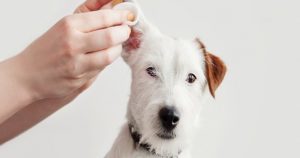
Ears
You will need to lift up or fold over your pet’s outer ear to be able to expose your pet’s inner ear. You want to keep an eye out for any cuts or sores and look for redness, drainage or debris. Debris that looks like coffee grounds can be a sign of ear mites. Next, give your pet’s ear a good sniff. Their ears should not smell bad or unusual. A foul odor can mean bacteria or yeast is growing inside causing an infection. A corn chip smell (yes, really) just means their ears are dirty and need to be cleaned. You could easily incorporate cleaning into this process. Be sure to check both ears.
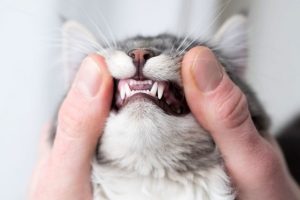
Mouth
First, check your pet’s lips for any ulcers or cracks. Monitor the smell of their breath. Extreme odor can be a sign of periodontal disease. Then, move your pet’s upper lip to expose their teeth and gums. Gums should be pink, not red or irritated looking. You want to ensure there are no bumps or ulcers in their gums and no loose or broken teeth. Make sure food, debris and/or hair are not wedged between teeth, the roof of the mouth or under the tongue. Their teeth should be white. If you see yellow or brown, it is a sign of excess tarter, meaning it is time for someone to get their teeth brushed! We recommend adding teeth brushing to this monthly wellness experience.
Body
The rest of your check-up should be a gentle massage looking and feeling for things that don’t belong — abrasions, bumps, tenderness and sores; even parasites, burrs and foxtails that may have found their way onto your friend’s furry coat.
Run your hands down the neck to the chest feeling for crusty lesions, bumps or lumps. Be extra careful to notice if lymph nodes or salivary glands are enlarged. Next, you want to touch both sides of their chest and monitor their breathing, checking for any irregularity or straining. Take your pet’s pulse by feeling the Femoral Artery inside the thigh. Look at the TPR chart for what is normal. Please note that very large dogs and geriatric pets have a slower breathing rate. A good rule of thumb to note is the bigger/older the pet is, the slower their pulse and breathing rate will be. While the smaller/younger they are, the faster their pulse and breathing rate will be.
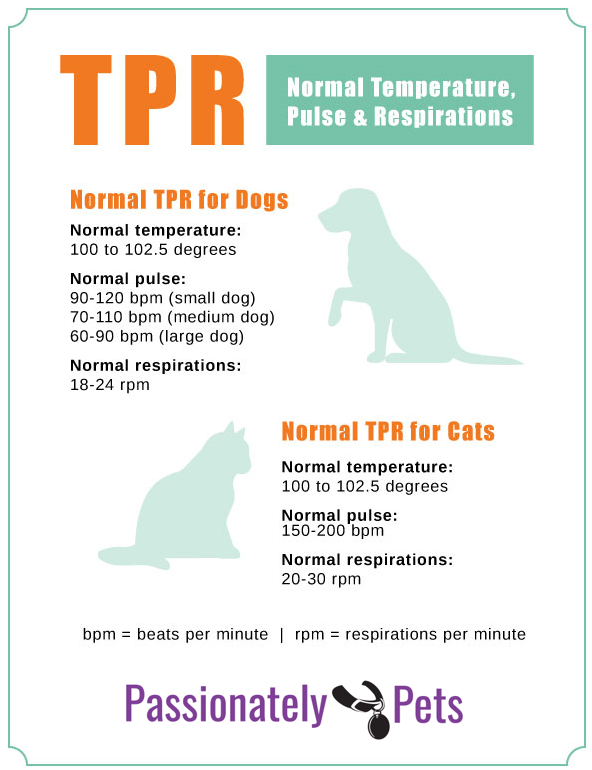
Then, run your hand from their neck to their tail, paying close attention to any signs of pain or any cuts. Gently feel their waist and ribs for any discomfort or distension. Look at their coat with a discerning eye – are there mats or dander, or is their coat shiny and healthy? Do they need a bath, a brushing, a groom or maybe even medication to improve their skin?
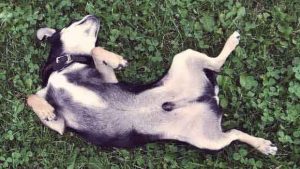
The next step is a great opportunity to give out some belly rubs (if they enjoy them). You want to press gently on their abdomen and observe any signs of pain or any abnormalities. Keep a close eye on their skin in this area for any bumps, lumps or cuts. You will also check their genital area, making sure they look healthy with no discharge or redness, as these can be signs of infections. Move their legs to check range of motion in their shoulder and hip joints to look for stiffness or pain. Finally, check their legs and paws by running your fingers along all areas, including between the toes if possible. Check each paw pad for cracks or any torn skin. Pay close attention to in between their toes, looking for swelling or redness. See if their nails are in need of a trim. And check if their feet have any strange, musty smells. Again, feel free to incorporate a nail trim into your monthly wellness practice.
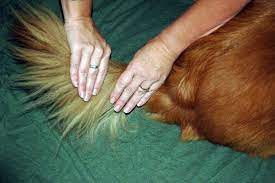
Tail
Check “under the tail” which should all be clean with no colored discharge. If your pet is older or arthritic and can’t perform his own hygiene, help keep him clean with a warm wet cloth. If you notice scooting or impacted anal glands, ask your Veterinarian or Groomer for help. Then long or short, fluffy or hairless, your pet’s tail too should be examined for bumps and sores, remembering that the area right above the tail often harbors parasites.
Health and wellness is important to keep track of on a regular basis. Be gentle and go the speed that is comfortable for your pet. Remember to make this a positive experience and reward your pet along the way. Many animals get uneasy when touched, but examine a little at a time, and they’ll come to enjoy this bonding experience. Plus, you will learn what is normal so it will be easier to identify when something is not and help is needed. Even the slightest change in your pet’s body or behavior is a good indicator that something is wrong. So make time to perform this check on a monthly basis. Consistency is key to noticing the smallest changes. If you do notice any of the abnormalities mentioned above, please consult your veterinarian for next steps. Stay happy and healthy everyone!
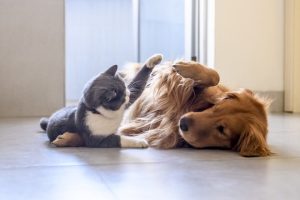
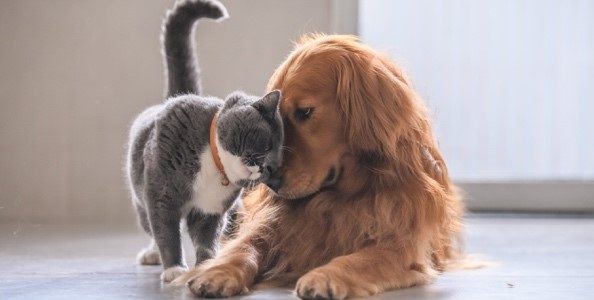




Leave a Reply